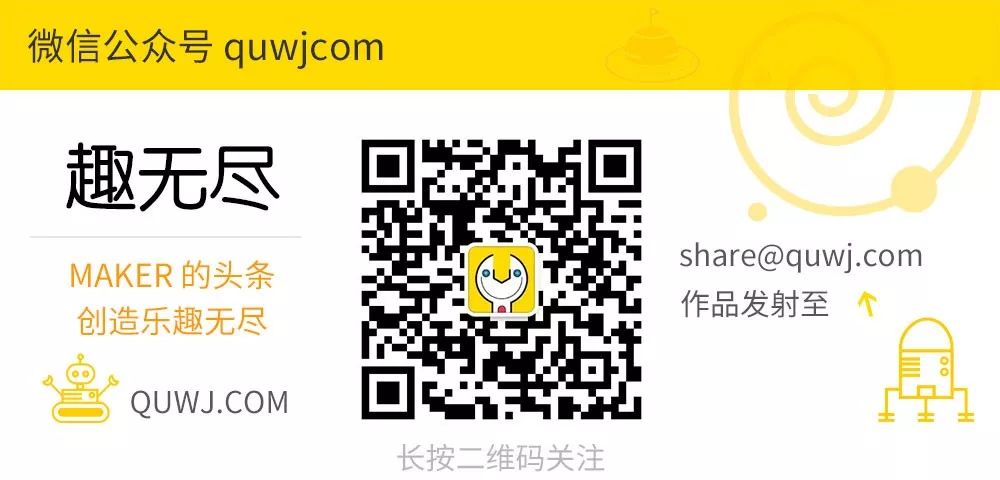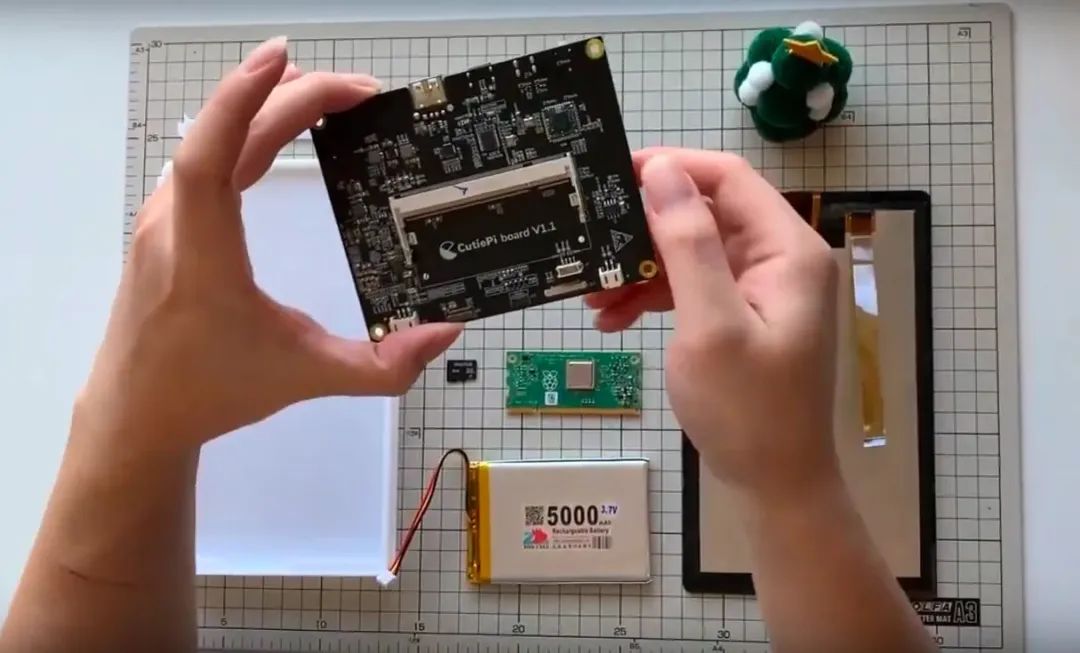
Do you want to break free and take your programs on adventures? This all-in-one Raspberry Pi tablet may be the best solution.
Long harboring the dream of a portable Linux device, a group of open-source enthusiasts set out to design the CutiePi tablet project (https://cutiepi.io). 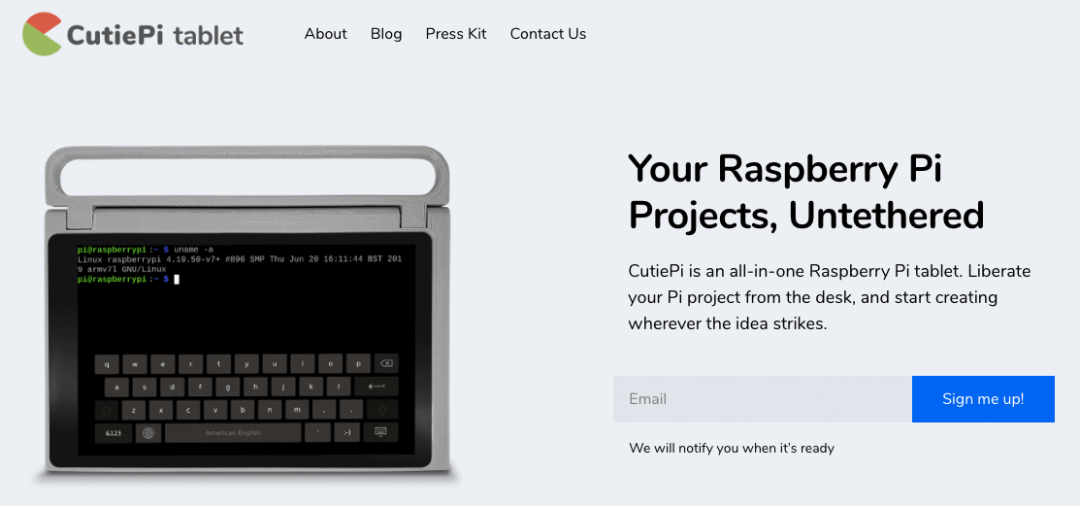
CutiePi official website: https://cutiepi.io/
Equipped with a Raspberry Pi Compute Module 3+ Lite and a customized motherboard, along with an 8-inch touchscreen, it offers similar functionality to standard tablets, fully satisfying the need to “take your Raspberry Pi project on the go.” 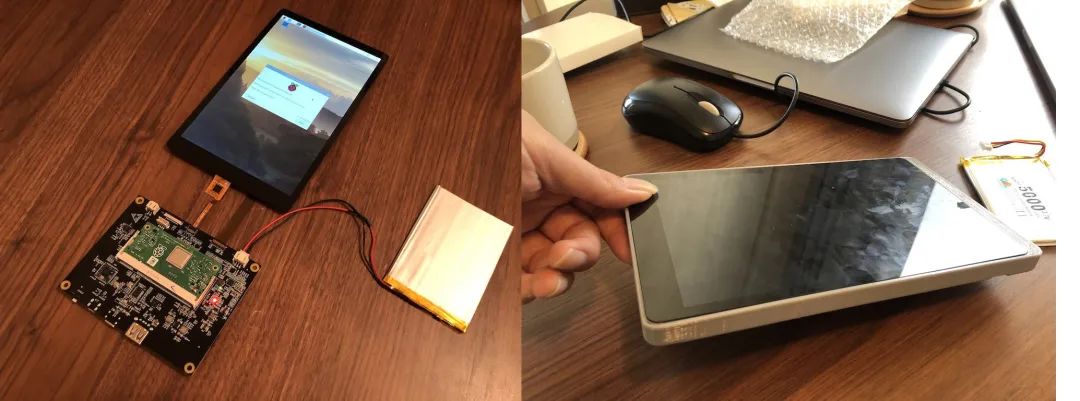
The left image shows the main components of CutiePi, while the right image shows the assembled CutiePi tablet.
“Our design goal is to use the CutiePi tablet like any other electronic device,” said project leader Penk Chen. “It includes a gyroscope, an MCU for reading battery and button signals, a power management module, WiFi/Bluetooth, speakers, etc. We also retained the camera connector and exposed the remaining GPIO pins, making it still friendly for hackers/makers.” This allows users to develop their own portable Raspberry Pi projects using CutiePi.
Creating a usable portable device is not easy. “Just having a lithium battery and a DC boost module is not enough,” Penk mentioned. “Some features we take for granted in consumer electronics, such as using it while charging, displaying remaining battery power, or simply detecting if a power cable is plugged in, are cumbersome to piece together using off-the-shelf modules or kits. This does not include writing a usable UI and creating a case that can fit the circuit components and wiring.”
Custom Embedded Motherboard
The first generation of the CutiePi prototype was actually just a cardboard box, paired with an off-the-shelf HDMI screen, Raspberry Pi 3, and a power bank. The second generation desoldered all connectors from the Pi 3, including HDMI, and used FCC soft flat cables to reduce thickness, then placed it in a 3D printed case.
While a typical maker project might stop there, the CutiePi team tirelessly created the third generation prototype: a self-designed motherboard, the CutiePi board, compatible with the Raspberry Pi Compute Module. “Using the Compute Module allows for a thinner device and enables exploration of hardware designs different from the Raspberry Pi development board, and most importantly, gives us the ability to mass-produce the CutiePi tablet,” Penk explained.
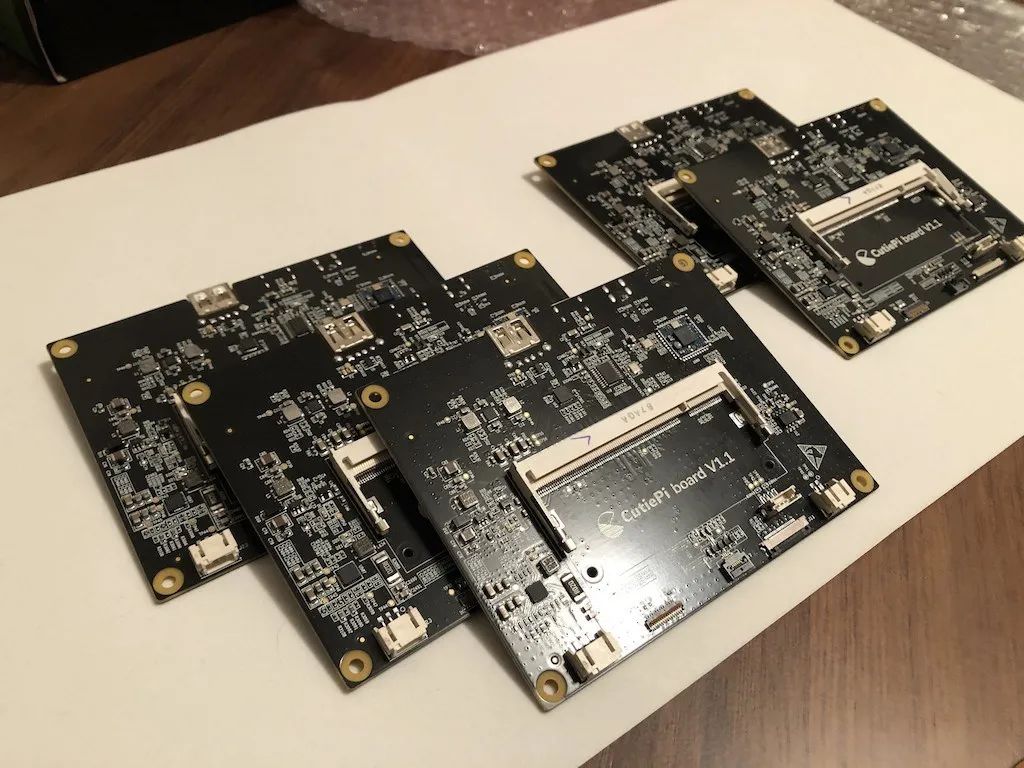 CutiePi team’s self-developed CutiePi board
CutiePi team’s self-developed CutiePi board
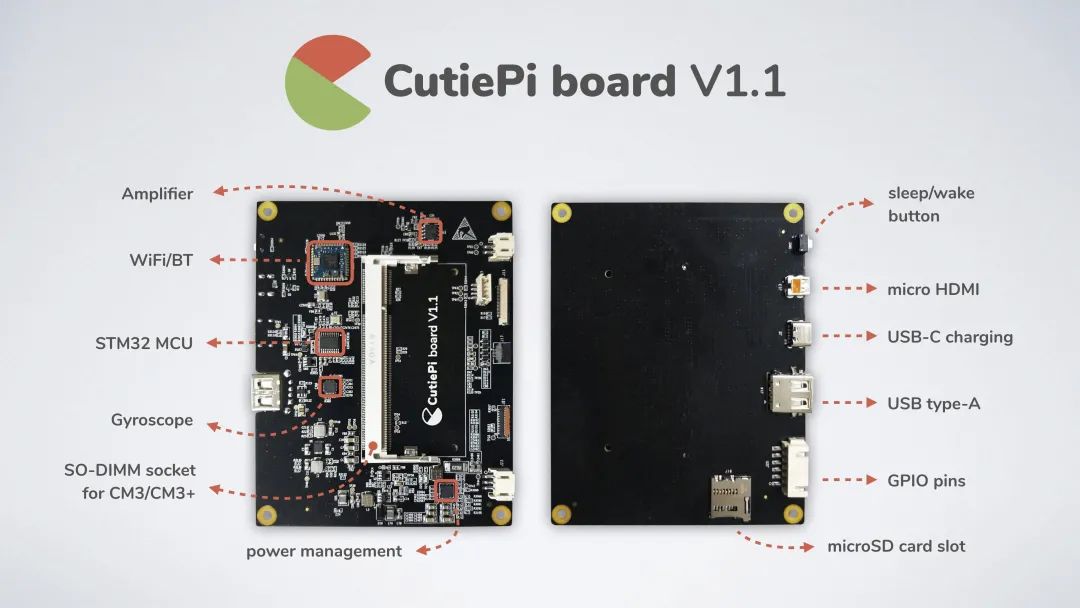 CutiePi board configuration diagram
CutiePi board configuration diagram
The development process took about three months to complete design, wiring, PCB fabrication, and hardware drivers, primarily relying on the Raspberry Pi Foundation’s generous open board design. The team has also released this OSHWA certified open-source hardware project on GitHub: https://github.com/cutiepi-io/cutiepi-board
“The original intention of this project comes from our love for free software, and CutiePi is our tribute to the open-source community,” Penk said sentimentally. “Everything you see is open-licensed, anyone can remake or modify it and use it in their own projects. In fact, we welcome that.”
Everything you see is open-licensed, anyone can remake or modify it and use it in their own projects.
Multi-Touch Screen
The CutiePi tablet features a 1280×800 resolution, up to 5-point touch MIPI-DSI screen. The entire UI is written using the Qt framework on the Raspbian operating system, allowing users to switch back to the original PIXEL desktop environment at any time.
“When you open our interface designed for the touchscreen—CutiePi shell, you will see WiFi settings, a Chromium-based browser, a multilingual virtual keyboard, and a terminal.” Penk also mentioned that in the future, there may be support for other native Raspbian programs through XWayland within the CutiePi shell.
All of this sounds promising, as the hardware design nears completion, the team’s current focus is on the mass production of the case design. They have decided to use crowdfunding to mass-produce CutiePi and welcome emails to stay updated on future development progress.
Original article: https://magpi.raspberrypi.org/issues/89 Author: Phil King CC BY-NC-SA 4.0, original; Editor: Wang Peiwen

DIY Minimalist Automatic Sensing Hand Sanitizer
IO Watch: Programmable Watch Made from Arduino UNO
PIKOCUBE: Programmable Dice with LED, Gyroscope, WiFi Control
